My academics certainly is one of my greatest knowledge stimuli and thought provokers. This week alone, I was brought down a rabbit hole of thought by my Language Arts class twice.
This is the account for one of those times.
Currently, we are reading Understanding Comics by Scott McCloud. In this book, some behind the scenes ideas are brought up that most people that aren’t in the field probably don’t know– some in the field probably don’t either.
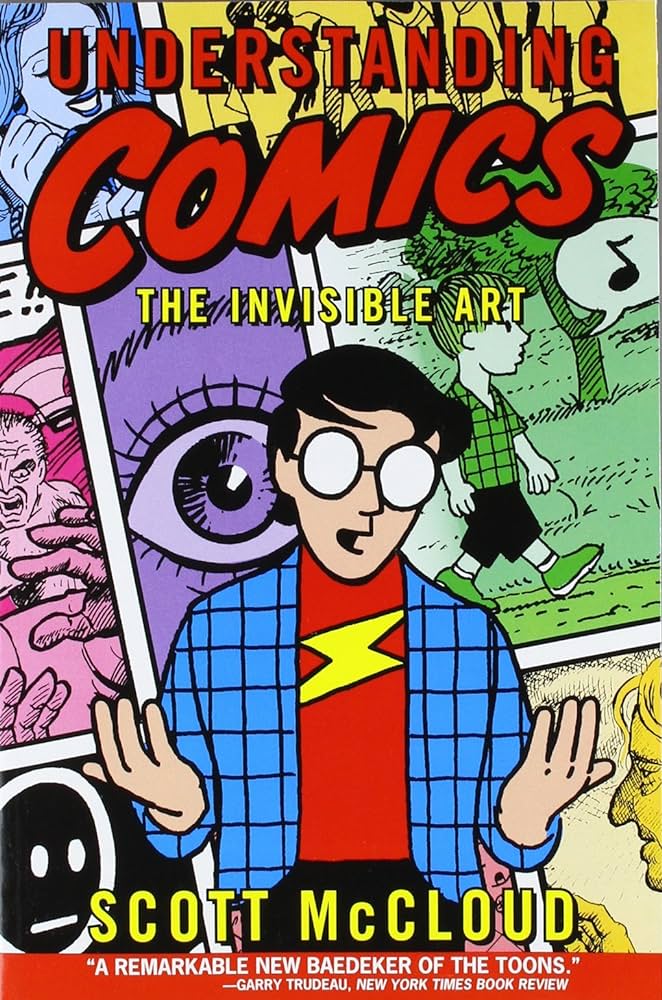
This week’s reading, chapter 3, was especially interesting for me; it touched on some psychological theories like closure and how creators utilize that to tell the stories they want to tell.
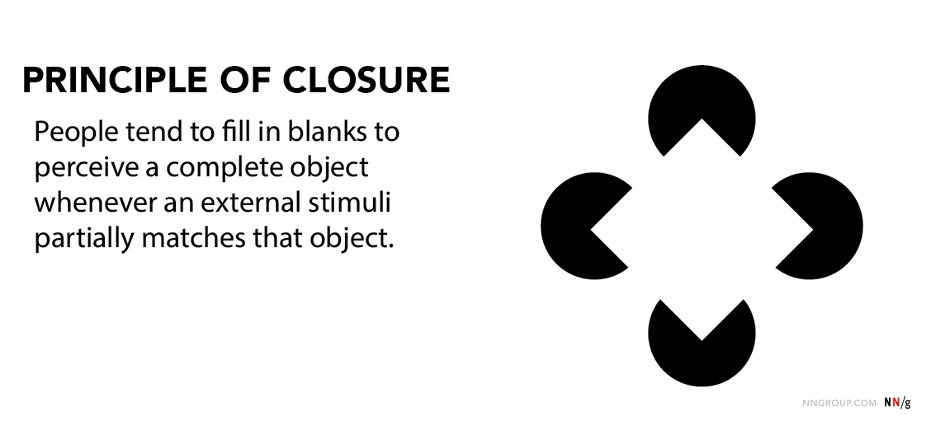
In McCloud’s book, he adapts this theory to comics, specifically to what they call the “gutter”, the space between the panels. The possibilities, he says, are virtually endless between panels, where it’s up to the audience to assume and imagine what goes on before the events of the next panel, and after the happenings of the previous one.
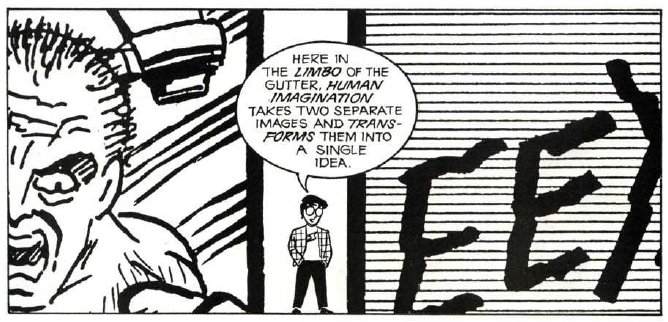
Participation by the audience is what makes stories so entertaining to follow. Allowing the readers to fill in the missing pieces of information with their own imaginations makes the story so much more entertaining, because the readers can decide what happens, make their own assumptions, and warp the story reality to their liking.
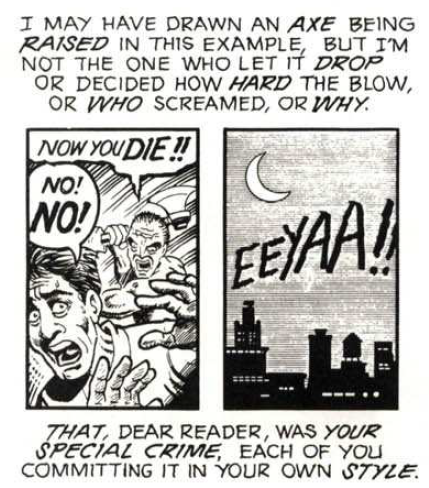
Writers are often told to “show not tell”, and I see this page as a perfect representation on how that should be done.
This then reminds me of another great creator– a filmmaker this time, the Director of WALL-E, Andrew Stanton. I remember watching his Ted Talk, “The Clues to a Great Story”, and one thing that really stuck with me was his “unifying theory of two”, which essentially tells an artist/author/creator that their audiences don’t want 4, they want 2+2. This idea is similar to what McCloud says, they may be slightly different, but they reflect the same sentiments.
Coming back to Understanding Comics, McCloud himself uses this “gutter”, or “show don’t tell”, or “unifying theory of two”, depending on who you ask, in his book. Page 84-85, the “Carl, don’t drink and drive” story; McCloud tells us that “less is more” can have functional uses, then he shows us by repeating the same story with less and less content, but with the same meaning.
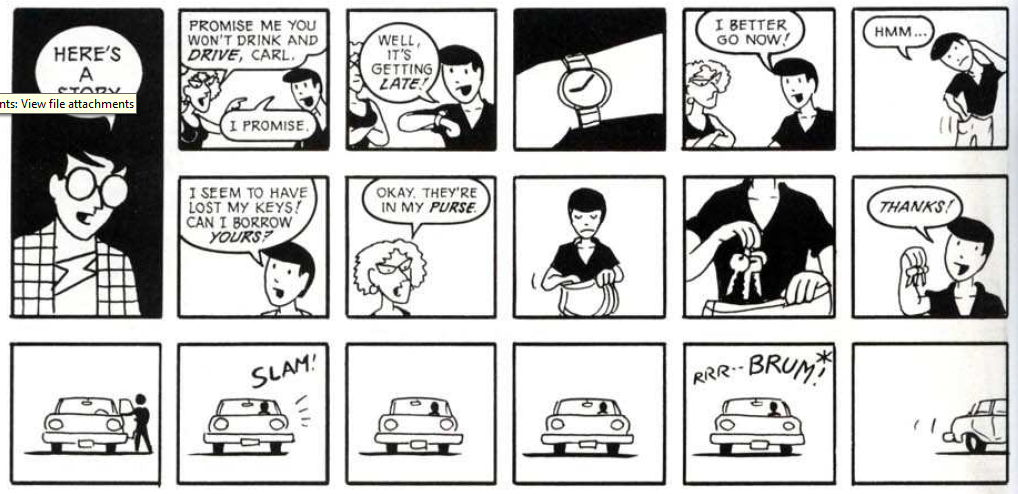
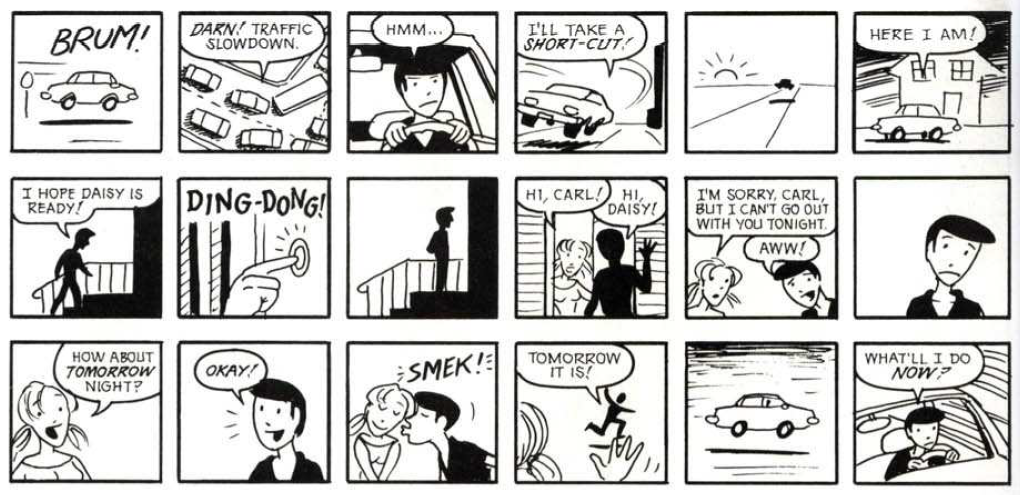
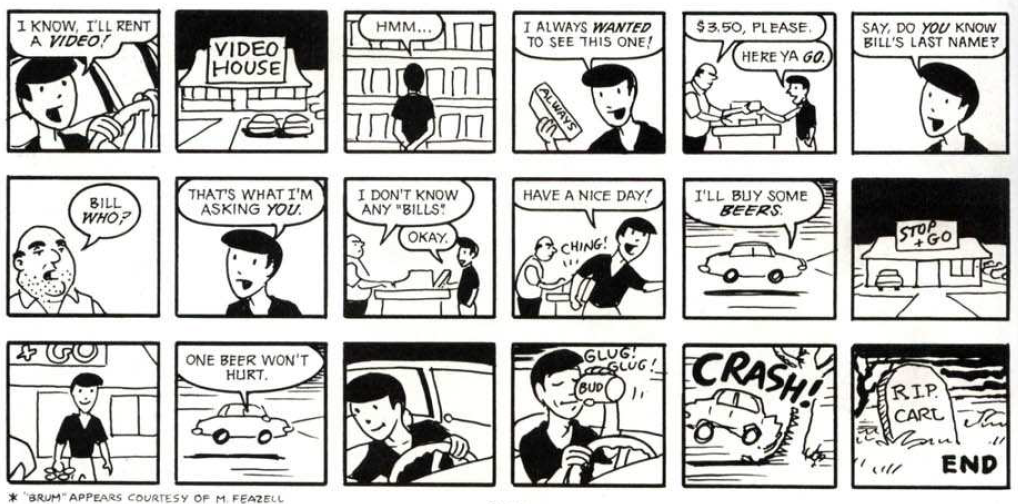
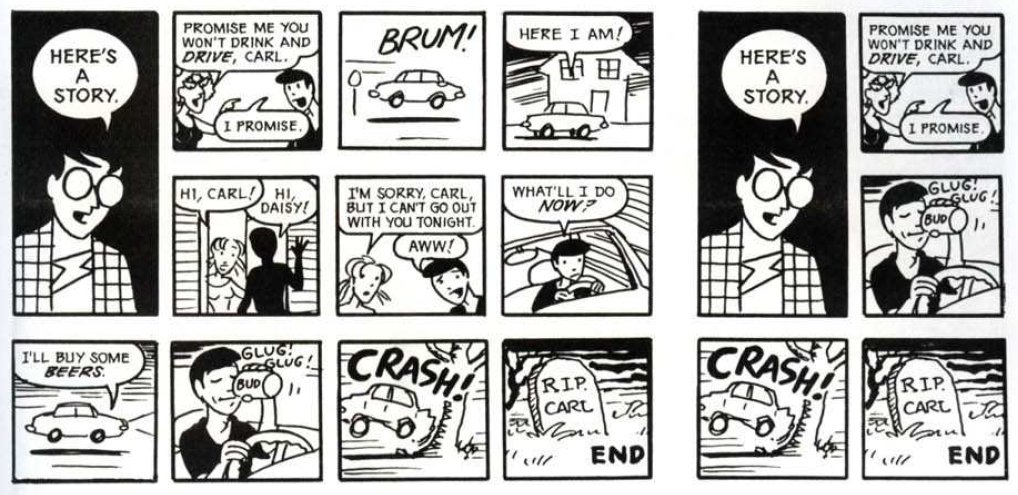
This book is such a gem, even for those who might not be interested in comics. It has some funny jokes and clever sayings that anyone might enjoy, plus, it is educational in a nonconventional way. It not only teaching us about comics as a medium, but dives into many literary devices and artistic elements.
I haven’t finished this book, yet, but so far, McCloud’s every point had good reason, and it definitely encouraged lots of thought from me, something I deeply value.